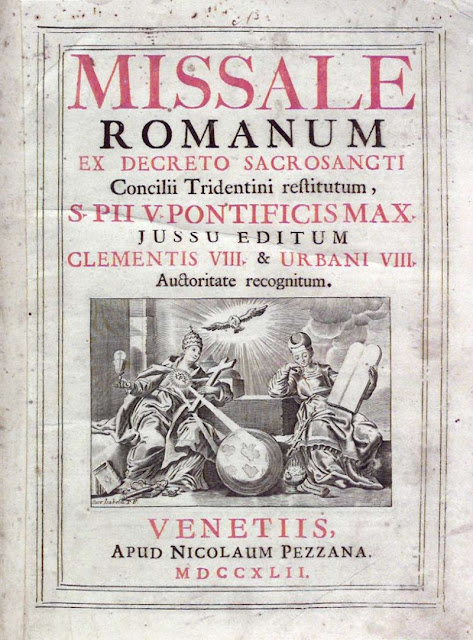While we tend not to think of it as much as we ought, the great figures and stories of the Old Testament have always had a notable place in the Church, including within the liturgical arts. Whether we are talking about painting, sculpture, mosaics or vestments, they are there to be found. This should come as little surprise given the importance of the Old Testament both in terms of salvation history and in terms of their typological importance. As Fr. Aidan Nichols noted in his book, Lovely Like Jerusalem, a "grasp of the great lines of Scripture, both Old and New Testament, is vital to a Christian culture..." He further adds that the study of biblical typology "enables a unitary reading of the Bible, Old and New Testament alike, and a reading, moreover, which chimes with that found in the Church's liturgical feasts and texts."
Perhaps one of the most famous instances of the inclusion of Old Testament imagery in sacred art is found in the papal basilica of Santa Maria Maggiore in Rome. If you look up, just above the columns that line the nave, you will see a series of rectangular mosaics depicting various scenes from the Old Testament. (Shown here in the middle is the scene of the fall of Jericho.)
But it is not just papal basilicas where one can find such images of course. Here is a painted panel, dated to 1523 and attributed to Simona di Firenze, coming from a reredos panel in a church in the south of Italy; it depicts Moses holding the Ten Commandments.Next we have a chasuble, dated to 1750-1774, which includes various scenes from the Old Testament including Moses and the Burning Bush, the collecting of manna by the Israelites (which, of course, has Eucharistic symbolism), the Sacrifice of Isaac and King David -- amongst others.
The art found on the title page of this Missale Romanum, dated to 1742, depicts a pope reclining on the left, holding the Eucharist in one hand and a cross in the other, and the High Priest Aaron on the right holding the tablets of the Ten Commandments.
Iconography is, of course, one of the places we especially see Old Testament figures featured.
 |
| Abraham |
 |
| Moses |
Stained glass is another. These stained glass windows come from Bath Abbey. The windows would appear to be late 19th century and depict Esther, Ruth, Hezekiah, Nehemiah and Jonathon.
Finally, the Duomo of Ravello adds its own voice to this in its well known ambo that depicts Jonah and the Whale -- a Christological symbol of death and resurrection.
This aspect of Old Testament imagery is perhaps one of those areas where our own approach to a renaissance in liturgical art and beauty is arguably lacking and could improve. This is certainly something we should endeavour to encourage and foster as these sorts of depictions invite curiosity, inquiry and deeper reflection on the mysteries of the Faith.



















